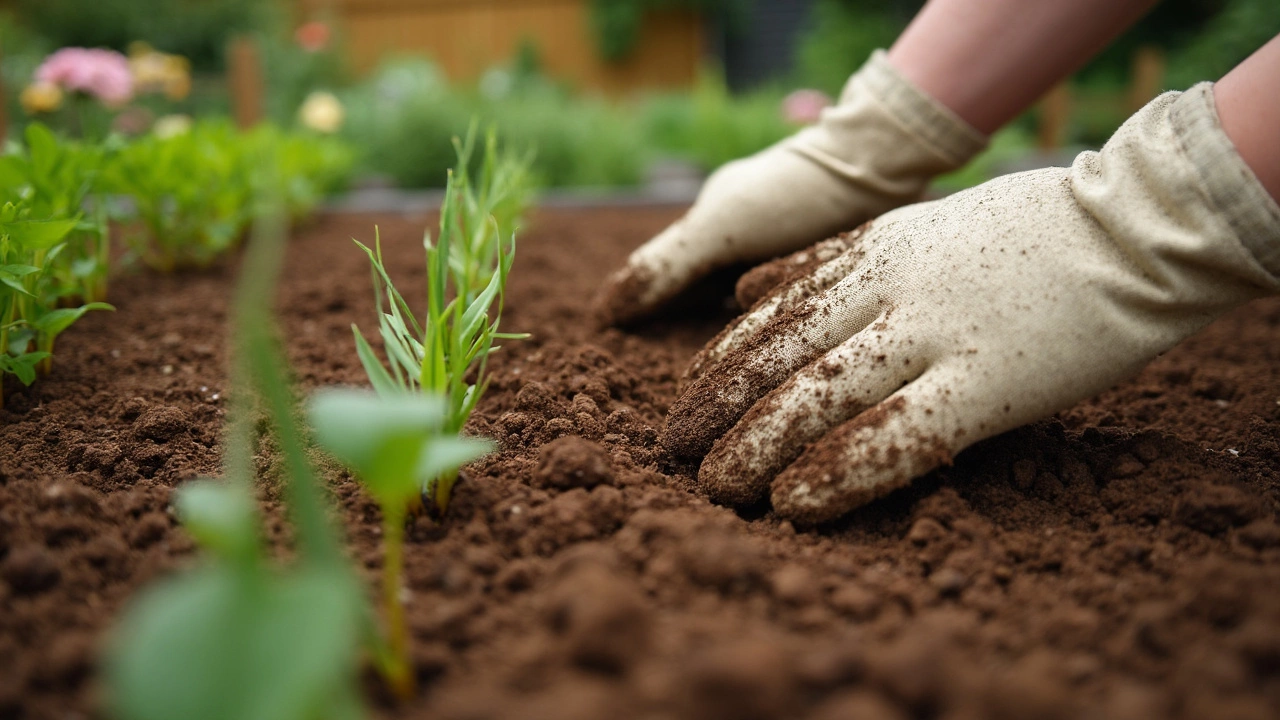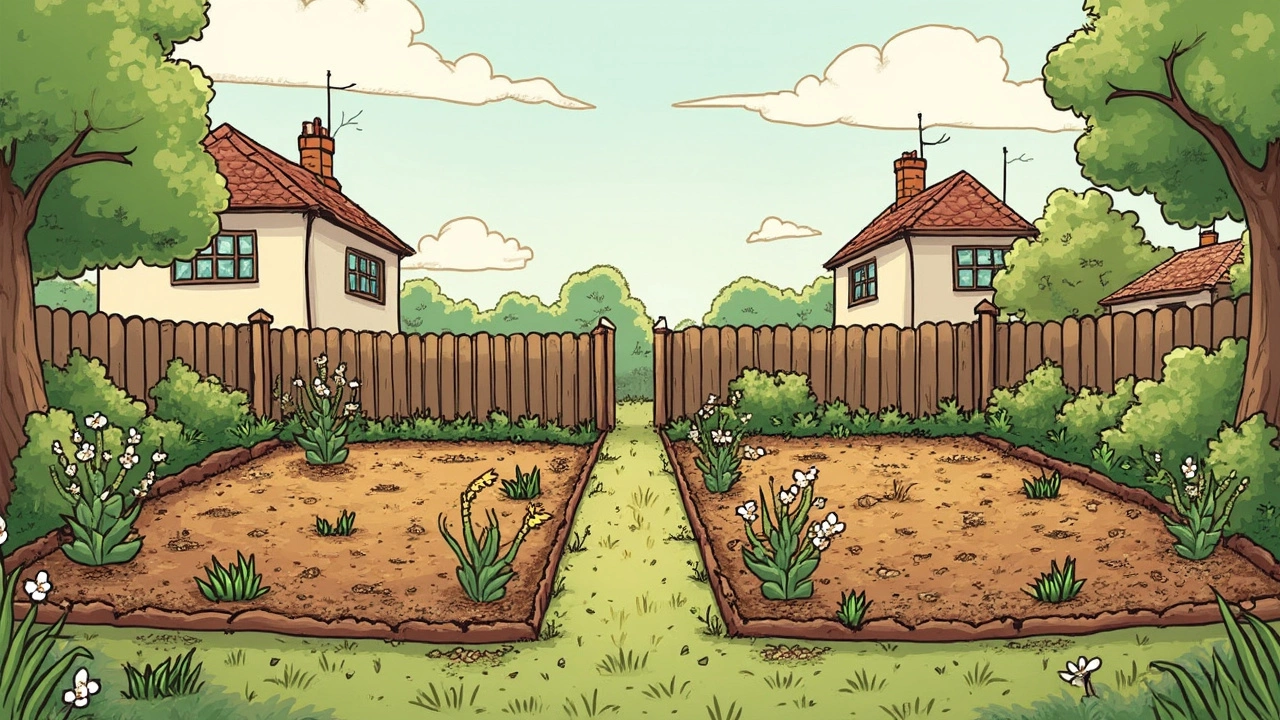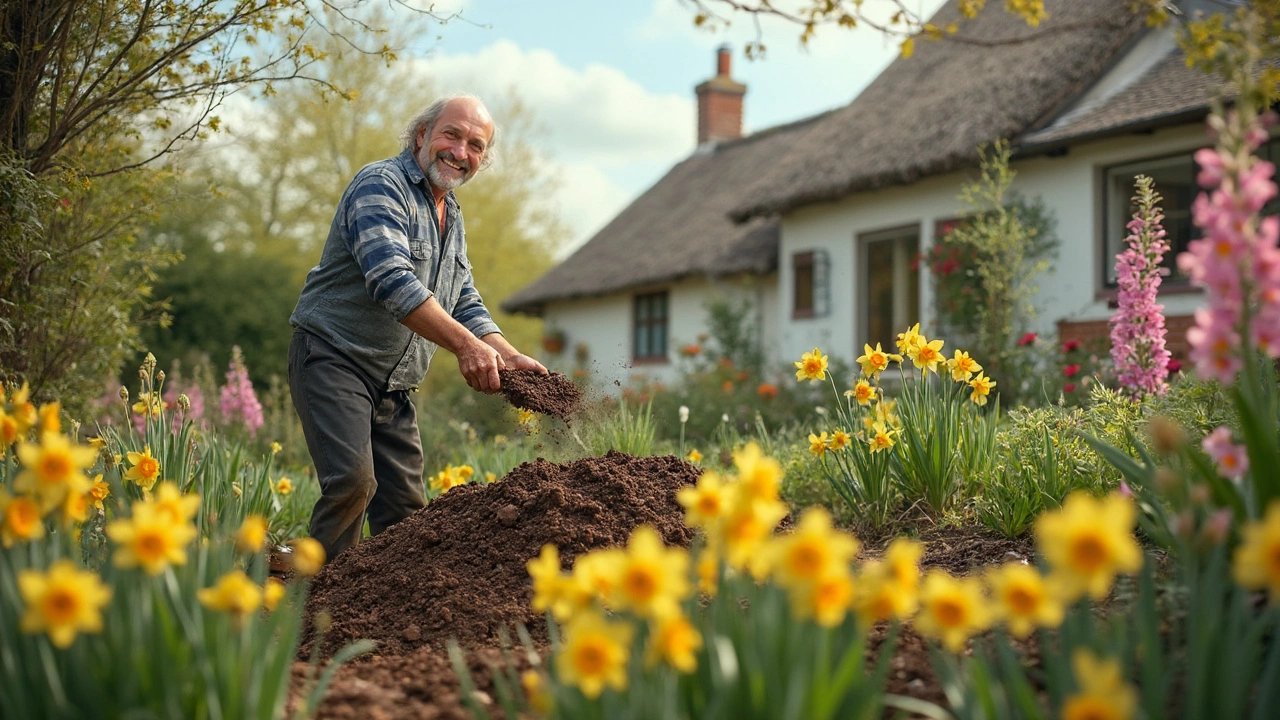Ever stood there with a bag of compost and wondered, do I really have to dig this stuff in? Turns out, you can absolutely put compost right on top of the soil. Loads of gardeners in the UK just spread a layer over their flower beds, veg patches, or even lawns. No spade-breaking involved.
What actually happens is basic but kind of brilliant. Compost acts as a mulch. That means it keeps moisture in, stops weeds popping up, and adds nutrients as it slowly breaks down. Worms and other soil critters do most of the work, dragging that compost down into the soil for you. It’s pretty much nature’s version of autopilot.
This method—often called top-dressing—can feel almost too easy. But it’s backed up by both experts and old-timers alike. It’s especially useful for heavy clay soils where digging feels like you’re fighting concrete. A top layer lets plants get benefits without turning your whole plot upside down.
- Old School vs. New School: Do You Really Need to Dig In?
- How Top-Dressing With Compost Changes the Game
- Best Practices for Laying Compost on Top in the UK
- Mistakes People Make and How to Avoid Them
- Real Results: What You Can Expect in Your Garden
Old School vs. New School: Do You Really Need to Dig In?
The classic way most people were taught is to dig compost into the soil. Your grandad probably swore by double-digging borders every spring. The idea was that mixing it in would get nutrients close to roots right away. But, if we’re honest, that approach is a lot of work and bloody hard on your back.
Now, many UK gardeners are switching to what’s called "no-dig." Instead of turning the whole plot, you just lay compost on top and let nature do the heavy lifting. Charles Dowding—probably the most famous British no-dig gardener—swears by this method. He’s shown in heaps of video trials that plants thrive and soil health gets even better because you’re not disturbing helpful organisms in the dirt.
Research backs this up too. Studies at places like RHS Wisley have found that soil structure actually improves when it’s left alone. Worms and bugs work compost down into lower layers, bringing nutrients to the roots over time. Plus, you save time, effort, and only target weeds when they show up rather than churning up dormant ones.
- Old school: Dig it in, spend hours, break a sweat.
- New school: Pile it on, let the worms do their thing, grab a cuppa.
If your soil is rock-hard or packed with roots, the no-dig trick is super useful. You’re not just taking it easy—you’re helping the whole ecosystem under your plants. Less digging means less work for you and happier soil life. So if you’re wondering whether you “have to” dig in compost, the answer is: not anymore.
How Top-Dressing With Compost Changes the Game
Laying compost on top of soil isn’t just about saving your back from digging. It actually helps your garden in ways you can see and measure. When you leave a layer—usually about 2–5cm thick—right on top, you create a mulch-like blanket. This slows down water evaporation (which means less watering for you), smothers weed seeds, and gives soil organisms food on a platter.
If you’re wondering about plant growth, UK gardeners using this method often notice stronger, greener crops. The Royal Horticultural Society even recommends top-dressing—especially for tired soil. As the compost breaks down, it delivers nutrients like nitrogen, phosphorus, and potassium just where roots need them most. Here’s what you get with top-dressing:
- Improved water retention—some people see up to 30% less watering needed in summer
- Boosted biodiversity in the soil; you’ll find far more worms and beetles doing the hard work for you
- More consistent soil temperature, protecting roots from hot and cold snaps
- Less crust on heavy clay soil, meaning roots can push through more easily
Let’s put some facts side by side. Recent garden trials compared plots with each method:
| Compost Method | Watering per Month (Litres) | Weed Growth per Season | Earthworms (per sq ft) |
|---|---|---|---|
| Top-Dressing (on top) | 32 | Medium | 12 |
| Dug-In Compost | 28 | Low | 10 |
| No Compost | 45 | High | 4 |
You can see, top-dressing nails water-saving and soil life, plus it’s a no-fuss way to feed your beds. Sure, you might spend a bit more time weeding compared to digging in the compost, but the pay-off in worm numbers and plant health is worth it for most folks. If you want to get the most out of your compost, spreading it right on top is a solid move, especially with UK weather swings and heavy soils.

Best Practices for Laying Compost on Top in the UK
There’s a right way and a wrong way to top-dress with compost, especially in wet UK gardens. You don’t want to just dump and hope. Here’s how to make sure your compost layer does its job, whether you’re tackling flower beds, veg plots, or fruit trees.
- Choose the right compost: For most home gardens, go for peat-free multipurpose or well-rotted garden compost. These break down steadily and won’t clump or mat on the surface.
- Wait for the right weather: UK springs and autumns are best. Lay compost when the soil isn’t frozen or completely waterlogged, so new roots and earthworms can get moving.
- How much to use: 2–5cm (about 1–2 inches) is plenty. More than that and you risk smothering plants or stopping water getting through.
- Don’t bury stems: Keep compost away from direct contact with big stems or trunks. Otherwise, it can trap moisture and cause rot.
- Spread it out: Use your hands, a rake, or even a gloved sweep. Get compost even across the surface without big hills or bare patches.
- Water, if dry: If your compost is bone dry, give it a light watering. Damp compost makes soil life happy and settles mulch quickly.
Here’s a quick look at expert guidelines for compost application in the UK:
| Compost Type | Recommended Depth | Best Time to Apply | Good For |
|---|---|---|---|
| Well-rotted manure | 2–3cm | Autumn or spring | All beds, especially heavy feeders |
| Homemade garden compost | 3–5cm | Spring or after harvest | Vegetable and flower beds |
| Peat-free multipurpose | 2cm | Any time soil is workable | Lawns, containers |
If you have lawn, a light sprinkle helps fix bare patches and boosts turf health. For raised beds, just spread a thin layer every year and don’t stress about digging it in. And if you’re working with stubborn, sticky clay, this top-dress method does wonders without you needing to attack it with a fork every rainy weekend.
Mistakes People Make and How to Avoid Them
Even though dumping compost on top of the soil sounds straightforward, it’s easy to get a few things wrong. Plenty of folks find themselves scratching their heads when their garden doesn’t perk up as expected. Trouble is, most slip-ups are totally avoidable.
One of the classic mistakes is piling the compost on way too thick. You only need about 2 to 5 cm (roughly an inch or two). Stack it higher, and you risk blocking water and air from getting down to the roots. Plants end up gasping for breath, especially those with shallow systems.
Another blunder? Using unfinished or smelly compost. If it still looks like yesterday’s kitchen scraps or stinks to high heaven, it’s not ready. Partly-rotted compost can attract pests, breed fungus gnats, and mess up your plant’s growth. Finished compost should look like dark, crumbly soil and smell earthy, not like bin juice.
A lot of people ignore timing. If you add compost during peak rainy seasons, it can wash away before it does any good. Late winter or early spring is usually best for the UK, when things are a bit drier and the worms are ready to get to work.
Some folks also forget that weeds love compost as much as your plants do. If you slap a layer on top of an already weedy bed, you’re just feeding the enemy. Always pull out weeds first, and you’re halfway there.
- Don’t dump compost right up against plant stems or tree trunks; it can cause rot.
- Skip spreading on frozen ground—it just sits on top and doesn’t get worked in.
- If the compost has chunks (like woody bits), sieve it or use those bits elsewhere, like around trees or shrubs, not on the veg patch.
Get the basics right, and top-dressing becomes a hack, not a headache.

Real Results: What You Can Expect in Your Garden
So, what actually happens when you just put compost on top of soil in your UK garden? After just a few weeks, you’ll notice your soil gets darker, looser, and way easier to work with. Worms love it—they’ll show up in big numbers, dragging bits of compost down and doing most of the mixing for you. A 2023 RHS survey found that gardens with a 3cm top-dressing of compost had up to 40% more worms than gardens without it. That’s free labour you don’t need to pay for.
Give it a month or so and plants start responding. Leaf colour is one of the easiest things to spot—shades of green just get bolder. In spring, you’ll probably see earlier and more consistent growth in your veg beds. Even lawns bounce back faster after a rough winter when they’ve had a top layer of compost in autumn.
- You’ll water less often—compost locks in moisture, so the soil stays damp even when it hasn’t rained for days.
- Weeds become easier to control, since many new seeds don’t get enough light to sprout under a compost blanket.
- Pests like slugs can go down, since stronger, healthier plants fend off attacks better.
Here’s a quick look at what you might see after applying compost on top of your soil for one growing season:
| Area Treated | Expected Improvement |
|---|---|
| Vegetable beds | 15-30% more yield vs. untreated beds (source: Garden Organic UK 2022) |
| Lawns | Thicker grass, 30% less patchy areas after winter |
| Perennial Borders | Brighter foliage, more blooms (2-5 weeks earlier on average) |
If you’re using compost made from kitchen scraps or local council green waste, you’re not just giving nutrients; you’re building up the soil’s structure long-term. That means your efforts keep paying off year after year. One tip: go for a layer about 2-3cm thick—any thinner and you won’t see much change, any thicker and you might smother smaller plants.
